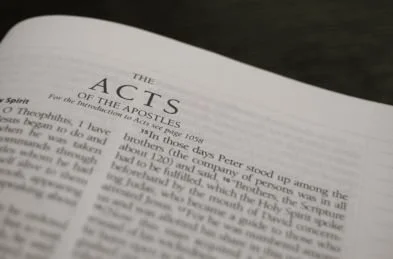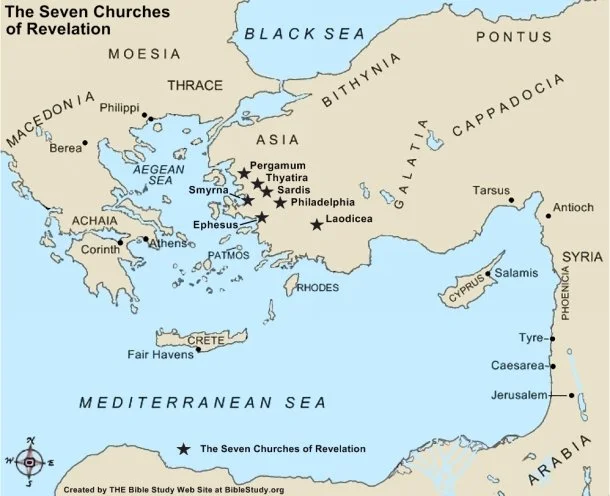The Emphasis of the Book of Acts
The Book of Acts is a complex letter. It appears that part of the letter was written to catalog the spread of the Gospel geographically to various people groups. Luke probably intended to offer evidence of the fulfillment Jesus’ promise before His Ascension from the Mount of Olives: “You shall be witnesses to me in Jerusalem, Judea, Samaria and to the uttermost parts of the earth” (Acts 1:8b). The letter seems formed around this geography, with the movement of the Gospel in Jerusalem (Acts 1:1-8:3), Judea and Samaria
(8:4-40) and beyond (9-28).
Within the geographical frame above, Luke also clarifies some of the key challenges faced by the early Messianic movement. He appears to systematically move between the internal and external crises of the believers. In the early stage of the narrative he mentions the frequent threats against the Messianic leaders by the Temple authorities (4:3-7; 5:17-27), which led to the stoning of one of the Messianic leaders (6:8-7:60). Later external pressures included the rampages of Saul of Tarsus that ransacked the houses of suspected believers in Jesus in a manhunt (9:1-5). In addition to the external pressures, the movement internally fought against complaints of inequity in matters of finance among its members (6:1-7), and even lying in matters of property between followers (5:1-11). The leadership struggled to define the community of believers, and attempted to reconcile the promises of the Hebrew Scriptures to the reality of the work of the Spirit in the Gentile born followers of Jesus (Acts 11:1-18; 15:1, 6-35; 21:21-25). This pressure plagued the Messianic movement throughout the period of the writings of the various letters of the Apostles to the congregations (Epistles).
Another emphasis of the letter includes an insightful narrative of the chief personalities of the leaders in the new movement. Biographical sketches are drawn from the glimpses in the letter of individuals like Peter (2:14-5:42; 9:32-11:18), Stephen (6:1-7:60), Philip (8:1-40), Barnabas (11:19-30; 13:1-14:28) and of course Paul (9:1-31,11:25-30, 12:24-14:28, 15:36-28:31). This view of the leaders is critical to our understanding, since it is often difficult to see a balanced perspective of the leaders from their writings. Many Epistles address certain arguments or problems in the fledgling congregations, without giving a sufficient background of the writer. This narrative gives a cross reference to a number of their struggles, and offers context to their other writings.
One of the most critical features of the letter is the explanation of the so-called “New Covenant” and its beginnings in the Gentile world. The Hebrew Scriptures promised that a “New Covenant” was coming to the Jewish people. A careful study of the Hebrew texts of this covenant offer no hint that Gentiles would in any way be a part of the plan. In fact, the covenant as it is described in the Hebrew Scriptures is primarily about the return of the people to the land and their hearts to the God of Abraham (Jer. 31:27-40; 32:37-40; Isa. 59:20-21; Ezek. 16:60-63, 37:21-28). One of the specific purposes of the letter to Theophilus appears to explain that while this is completely true, it was not complete. The New Covenant, according to Luke, BEGAN with a small number of Jews (cp. Acts 1 and 2), then entailed a dramatic conversion of many Gentiles (Acts 10:28-29) and would eventually END with the fulfillment of a Kingdom of Jews that knew their Messiah (Acts 2:17-21). The expansion of the New Covenant to include the Gentile was probably the dominant theme in the latter half of the letter.
Finally, there is ample evidence the letter intended to offer a new and expanded explanation of the nature of the God of Abraham. Since the world of the Jews was thoroughly monotheistic, the letter attempted to offer some small explanation to the Messianic view of God. This view was an expansion of the traditional Jewish approach, not an attempt to depart from it. The view of the Hebrew text was simply that God is One. The view of the Messianic believers was that the one and only true God revealed Himself in a variety of personality roles. Each personality role was complete: independent in intellect, emotion and will. In that way, the one God was multiple in personality, but, in contrast to paganism, God was not multiple in Essence – thus an extension of the essential Hebrew monotheism. The difference may appear slight, but to the Apostles it was the marking line between a pagan view, and the view consistent with the Hebrew Scriptures, which they viewed to be the exclusively true Word of God. Examples of this in the letter appear in the personification of the Holy Spirit (Acts 1:2,5,8), the Heavenly Father (1:4) and the obedient Son (2:27). Special emphasis in the sermons of the Apostles show a distinction of personality between each of the three (Acts 2:32-33). In that way the Messianic movement believed that their approach offered an expanded view of the God of Abraham.



